
Review on 💪 Dorman 615-183 Engine Intake Manifold: Top-Rated Black Model for Select Cars of Various Makes by Brian Forbis

A cheap replacement for the original manifold that serves its purpose.
I bought this to replace my 2000 5.3 liter Chevy header which had warped to the point where it no longer matched properly with the rest of the engine could, even with a premium Felpro class gasket kit (I've tried both the standard Felpro kit and their premium offering). I've consistently gotten long-term fuel trims in the range of about 12% with premium Felpro seals, which I'll detail below. Turning on the check engine light isn't enough, but I heard a hiss and the engine computer was struggling to get the engine to idle with so much leaking. The car antenna wobbled a bit when idle. I think the problem with the original OEM header was that they used mounting bolts with thick rubber washers. So if the plastic manifold wanted to warp, all it had to do was press the rubber washers a little harder. Unfortunately, GM designed these rubber shims to be thicker than the mounting shims, so the vacuum leak starts to open slowly. (Maybe from 80,000 miles in my case? I ended up replacing the manifold at 123,000 miles.) Auto repair shops didn't care because the problem wasn't big enough to illuminate the check engine light, but idle motion problems weren't too severe. But I'm a perfectionist. As further evidence of this warping theory, GM management says that original mounting bolts cannot be reused. Ever heard of a reason not to reuse bolts in an auto repair unless they're cracked or otherwise deformed? I bet rubber washers are behind this suggestion. With a straight edge, I also saw that the stock intake manifold was deformed at the junction with the metal engine. In my opinion, the new Dorman header is pretty cheaply made. However, my fuel trim is now under 2% and is usually better than yesterday's test drive. He closed the vacuum leaks, no doubt about that. However, this cheap product has a number of disadvantages. #1 is that the bolts are soft metal and trying to tighten this thing to the correct spec for the engine almost snaps the bolts off. (Original GM bolts had longer heads that were easier to grip with a ratchet.) Also, many bolts are all plastic and there's no metal in the header to accommodate most of them. In the manual it is known not to use more than 5 Nm of torque, otherwise you will probably tear off the plastic! How cheap can you come? You have to use your old MAP sensor and unfortunately it uses one of those "plastic screws" at the very back of the manifold. This makes installation difficult as you have to connect this sensor to the manifold while trying to get the entire manifold back into place during the installation process. Heaven help you if you end up having to replace that sensor because you have to remove the entire intake manifold to get it. (The OEM header has the MAP sensor mounted up near the tail but NOT behind it.) Is it better designed than the stock? In a way yes, in a way no. The mounting washers are built into the manifold, so you don't have to align each washer when you first install the manifold. Also, this new manifold has COMPLETELY eliminated my pesky vacuum leaks, so I give Dorman credit for that. I also noticed that the PVC hose runs near the front of the manifold next to the throttle body? Why should they do this? I can only assume it offers better distribution of all those oily vapors being sucked in through the PCV valve. (My old manifold spilled a few spoonfuls of accumulated crankcase oil after I took it out and set it aside. So I thought about trapping my old engine, but in general my engine uses so little oil that I think about it I'm not too concerned.) Installing this EGR tube is a pain. It is very difficult to seal properly as the high temperature pipe is very stiff. When I first started the car with the new manifold, it leaked a lot more air than with the old manifold. So I put some cigar smoke in the brake booster vacuum hose and it came straight out of the EGR port. problem found. That was the only major issue I had installing this thing, aside from the cruise control cable being too tight, causing the engine to chug on the first attempt to start it with the new manifold. I didn't have to buy anything. Gaskets or even injector seals with this thing, it had everything I needed except for the PCV valve hose fitting. This was probably due to the open box deal I received, so I can't complain too much. Another issue I have with this new intake manifold is that it offers absolutely no moisture protection for the knock sensors mounted directly below. . GM now recommends sealing these rubber plugs with the RTV and leaving an open channel in the bead to the rear of the engine to allow accumulated moisture from the environment/washer fluid to escape. A lot of people change their knock sensors when replacing a manifold, and so do I. One of the rubber plugs has completely come loose over the years and although I don't wash the motor, there was some corrosion evident on the old sensor, although it wasn't that bad. I also bought a new Dorman wiring harness for the knock sensors, but after removing the original header I decided that the original GM wiring harness was better quality than the cheap replacement Dorman harness I bought (and always fits still on a shelf in my garage). . However, if you wash your engine with any frequency, it would probably be better to include knock sensor replacement in that job. (These things aren't cheap) I don't know how long these knock sensors last on average, but the only way to replace them is to remove that manifold, so just swapping them out might be good preventative maintenance while long You they suspended. As I said before, this vacuum leak problem may have been slowly creeping up on me for a number of years. Turning on the check engine light has never been so bad, probably for several reasons: #1 is that the oil that builds up in the manifold drips down through leaks, taking dirt from the outside with it. This actually acts as a small seal to limit the size of the vacuum leak. When the gaskets were first replaced, the manifold intake flowed significantly worse than with the old gaskets, which were completely flat! Another factor that likely reduced the size of the vacuum leaks were the foam pads that GM installed under the front and back of the intake manifold to keep water from getting into the knock sensors. Not only does this minimize water ingress, I think it also helps minimize air ingress, which is exactly what the doctor ordered when trying to minimize vacuum leaks. GM says that when you service the manifold you have to remove the rear sponge seal to let the water out, but unfortunately this also opens up air for vacuum leaks. After removing the rear sponge pad, my fuel trim readings nearly doubled and you could clearly hear the leaks. Does this Dorman distributor cost twice what GM charges for a distributor replacement? If you won't be driving a car for a few years and/or you're on a very tight budget, I can say yes. However, with cheap metal screws, I don't want to get into a situation where I have to replace them. So hoping that this new manifold will last another 100,000 miles may not be realistic. I really feel sorry for the next mechanic who for some reason has to replace that thing or that very rear mounted MAP sensor. In hindsight I might have replaced the MAP sensor when I replaced the manifold, especially if I was planning on keeping the car for years to come. (Similar in strategy to replacing the knock sensors if you have everything open ended.) As a general note, I have no doubt that many of these Dorman aftermarket parts are better than the original OEM parts. On the other hand, Dorman has the benefit of being able to see the mistakes OEMs have made with their parts over the years and fix those problems. But GM doesn't forget the problems that happen with their own parts, and they often redesign them to make them better. So I'm guessing that the new replacement headers that GM is now selling are of better quality than this Dorman product, but they also charge a lot more for them. One thing I tried before replacing the original manifold is twisting it. I was afraid that I would break, but what do I have to lose? If tugging didn't fix the problem, I still had to replace the distributor. After 2000 miles with the Super Torque OEM manifold I believe it reduced some of the warping because I could see the difference from the straight edge when I eventually replaced it. But those clean gaskets and the newly exposed area under the manifold still gave me over 10% fuel trim, and I could hear and feel it at idle.
- Easy to read control panel
- There are new competitors
New products
Comments (0)
Top products in 🚀 Engines & Engine Parts

Robot vacuum cleaner Roborock S7 with self-cleaning base RU, white

22 Review
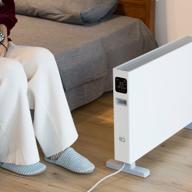
Smartmi convector Smartmi Electric Heater Wifi Model convector with display white (Rostest EAC), CN, white

21 Review
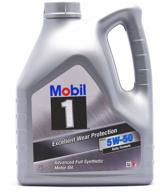
Synthetic engine oil MOBIL 1 FS X1 5W-50, 4 l, 4 kg, 1 piece

14 Review

Synthetic engine oil LUKOIL Lux synthetic SN/CF 5W-40, 1 l, 1 kg, 1 pc.

35 Review
Another interesting products
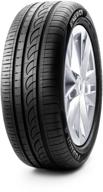
Tires pirelli formula energy 225/50r17 98y xl

14 Review
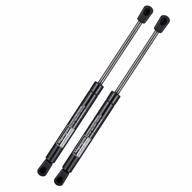
2 Vepagoo 10In 13Lb/58N Gas Shock Spring Strut Lift Support For Cabinet Door Truck Tool Toy Box Lid - C16-03213

13 Review
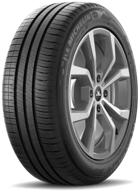
MICHELIN Energy XM2+ 185/65 R15 88H summer

29 Review

ARANA C16-08568 20" Gas Lift Struts - Perfect For Trucks, RVs, And Boats - 20 Lbs Capacity - 2Pcs Set

15 Review

